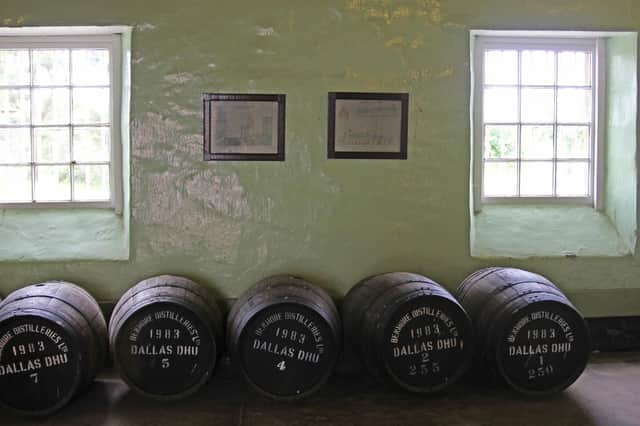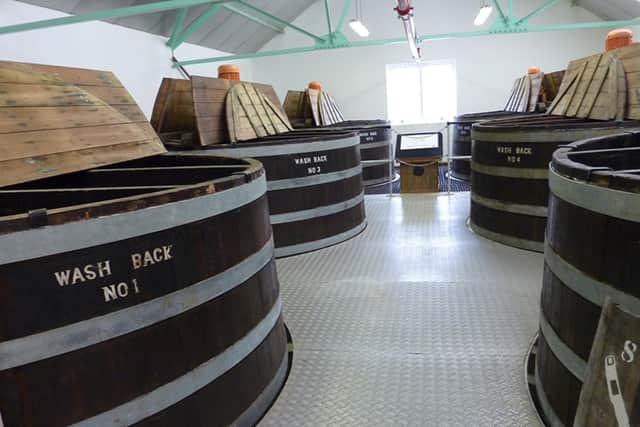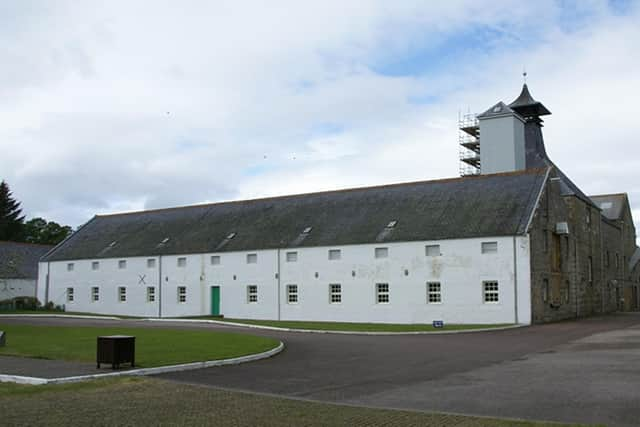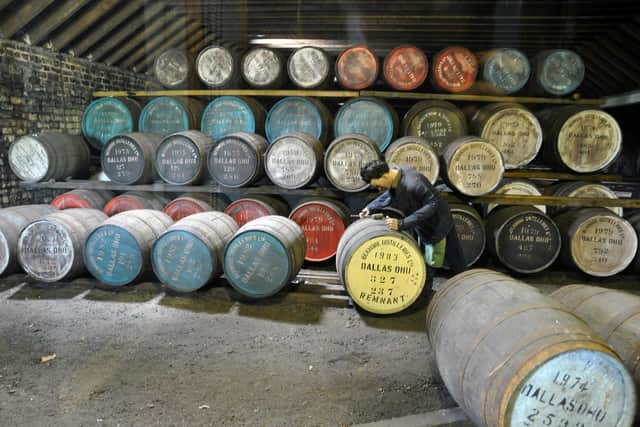'Sleeping' whisky distillery could wake after 40 years as Historic Environment Scotland looks to produce national drink


It has been described as the perfectly preserved time capsule of the distillers art.
Now a drop of the good stuff could be distilled once again at Dallas Dhu distillery near Forres as Historic Environment Scotland presses on with its plans to bring production back to the site, which currently serves as a museum.
Advertisement
Hide AdAdvertisement
Hide AdThe distillery was mothballed in 1983 as the whisky industry suffered from a crippling drop in demand for the spirit around the world.


Dallas Dhu was closed by then owner Scottish Malt Distillers – a precursor to Diageo – along with 10 other distilleries as a balance was sought between existing maturing stocks of bonded whisky and anticipated levels of future sales in the face of global recession and successive duty rises, which pushed the tax content of each bottle sold in the UK to around 80 per cent.
Almost immediately after it closed, the distillery was handed into state care with then Historic Scotland managing the distillery as a museum and visitor attraction where all the kit used in the traditional distilling process remained just as it was as the doors closed for the final time.
All that has been missing is the glorious, peculiar smell of whisky making.


Now, following 10 years of serious discussion surrounding production resuming at Dallas Dhu, it appears that its copper stills might be fired up once more.
Historic Environment Scotland has reported a positive meeting with current property owners Diageo with negotiations “refined down to a small number of considerations” with the business plan circulated to board members and the finance committee now considering proposals.
“We have been exploring opportunities to enhance the existing visitor offer at Dallas Dhu and are progressing discussions,” a statement from Historic Environment Scotland said.
The last cask of Dallas Dhu – number 327 - proved to be a lucrative legacy of production of Dallas Dhu for the government agency when it put up for sale almost 300 bottles of the spirit for £95 each in 1998.
Advertisement
Hide AdAdvertisement
Hide Ad

The heritage body held onto bottles 19 and 83 to represent the date that the distillery closed and today a bottle of the 23-year-old Dallas Dhu bottled in 1983 is selling for £1,050 on one whisky website.
Bringing the distillery back into production and turning the heritage site into a focal point for tourists could provide a lucrative income stream for Historic Environment Scotland although final details of its plans for the Forres site are yet to be disclosed.
Built in 1898 by local entrepreneur Alexander Edward, the distillery was first known as Dallasmore and was created, along with its neighbour Benromach, to meet the demand for malt whisky for blending.
Around this time, a taste developed for the smoother malts of Moray and old Banffshire with Mr Edward selling Dallasmore to Glasgow-based Wright and Greig Limited who wanted a supply whisky for its then popular blend Roderick Dhu, which was named after a character in Sir Walter Scott's novel The Lady of the Lake.
The site for the distillery proved ideal, with barley from the fertile Laich of Moray and the water from clear-flowing Altyre Burn readily available.
With transport to the bottling plant in Glasgow provided by the Forres to Aviemore stretch of Highland Railway right next to the distillery, whisky production continued to prosper.
The distillery was first closed down in 1916 by the Lloyd George government because it was not producing industrial alcohol for the war effort. Then, in 1939, a fire destroyed the still house. It was rebuilt but the site was almost immediately shut down due the outbreak of World War Two.
Today, it is understood that Diageo does not intend to restore production at the site with HES working with a “preferred partner” for the future of Dallas Dhu.
Advertisement
Hide AdAdvertisement
Hide AdOne option would be to return only distillation to the site which would leave its malt barns, kiln and mushtuns – where malted barley and water is mixed to create sugary wort – and washbacks, where weak alcohol ‘wash’ is produced, out of use.
The quality of the equipment remaining at Dallas Dhu has allowed visitors to the distillery museum have long able to follow the old-style processes of whisky making from start to finish, something that would be impossible in a working distillery for safety reasons.
A statement from HES added: “Dallas Dhu’s significance lies in its ability to demonstrate the working conditions and lifestyles of the people who worked here in recent history. The manner in which it was taken into care immediately upon closure means that, not only does all the fixed plant and machinery remain in place, but so also do the movable items
(e.g. hand tools), that give added value. It is also substantially architecturally complete. The property includes the malting and distilling factory, the bonded
warehouses, and workers' housing. This is unlike many other industrial sites in care, which are often missing elements, often more social elements such as housing.”
Last April, Dallas Dhu was the venue for the opening night of the Speyside Whisky Festival which was hosted by Livingston-based Aceo Ltd, cask whisky brokers and suppliers of distillery services to the Scotch whisky industry.
Then, George McNeil, chairman of the whisky festival, described the “romantic location” of Dallas Dhu.
He said: “You can feel it in the air when you are here. There is hopefully a possibility that it could be producing whisky again. If we can get a working distillery back into the family of distilleries up here that would be wonderful.”
A spokesman for Diageo was unavailable for comment at the time of press.